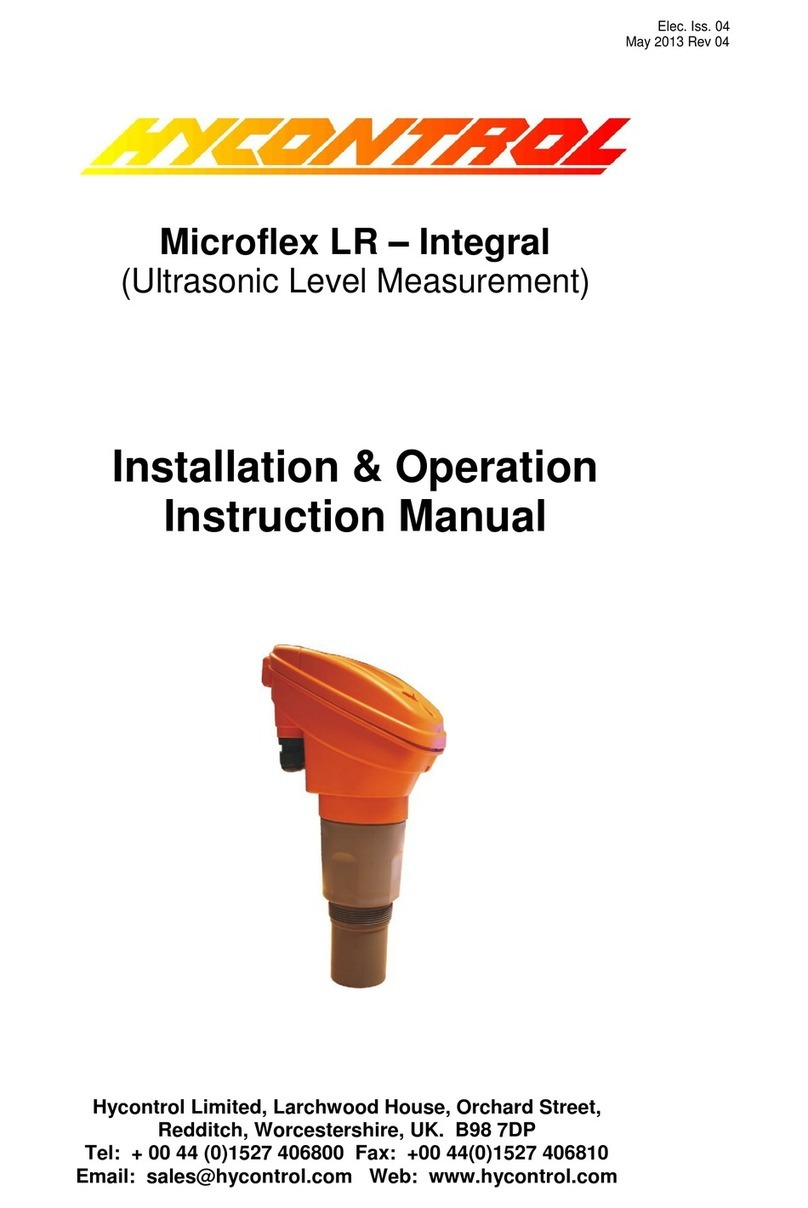IMPORTANT:
For safety reasons, and to ensure proper function of these instruments, it
is strongly recommended users carefully read this instruction manual
before installation.
Application
The DIAMOND POINT DP220 / DP230 / DP240 / DP250 are vibration-type
level control instruments that detect theminimum or maximum level inbins,
silos and hoppers, filled with grained or powdered materials (bulk solids).
Typical product applications are plastic granules, all kinds of pellets, flour,
cement, lime powder etc.
IMPORTANT:
The instruments cannot be used for detecting materials which are sticky
and tend to build a deposit on the vibrating blade!
General Notes:
▪Installation and maintenance must be performed by qualified
technical personnel only.
▪The DIAMOND POINT vibrating level sensors must be used only in the
manner outlined in this instruction manual.
▪The DIAMOND POINT vibrating level sensors are sensitive instruments
which need to be handled with care. Never expose these instruments
to mechanical loads and temperatures higher than indicated in the
technical data. Do not make any changes on these instruments.
Models (drawings see page 7)
▪DP220: standard model, insertion length approx. 170 mm
▪DP230: with pipe extension welded, insertion length up to 2 m
▪DP240: with pipe extension screwed, insertion length up to 4m
▪DP250: with cable extension, insertion length up to 20 m.
Function
The signal from the electronic circuit of the DIAMOND POINT excites the
blade of the instrument to vibrate at its resonance frequency of 286 Hz.
When material covers the blade of the probe, the vibration stops. This is
sensed by the electronic circuitry which forces its output to switch. When
the blade gets uncovered, the vibration restarts and the output then
switches back.
Technical Data
General:
Enclosure: Die cast aluminium (powder coated RAL2008)
Protection IP66
(IP65 for remote electronics installation)
Two cable glands M20x1.5
Probe: Stainless steel 1.4301 / AISI 304
Resonance frequency 286 Hz
Extension cable DP250: polyurethane sheathed
Connection: Thread 11/2” EN10226 (BSPT) or 11/2” NPT
Optionally: Tri Clamp DIN 32676 for DP230
Time Delay 1 second from stop of vibration
2 to 5 seconds for start of vibration
Indication LED on PCB (option: externally visible)
Material density: Non-sticky bulk solids, min. 20 grams per litre
(10g/l with special model “extreme sensitivity”)
Safety: Protection class I / installation cat. III
Pollution degree 2 / altitude max. 2000m
Max. pressure inside bin: 10bar
(0.8 to 1.1 bar for models with ATEX or UKEX approval)
Max. load onto extension cable DP250: 200kg
Max. load onto vibrating blade: horizontal: 250N, vertical: 1000N
Electronics:
Wide range with relay output
Power Supply: 22...250V AC/DC with relay output
Relay Output: 2 volt-free change-over contact (DPDT),
Max. AC: 250V-AC, 8A, 2000VA, cos= 1
Max. DC: 8.0A at 24V-DC / 1.5A at 48V-DC
Min. DC: 24V / 100mA
Power consumption: ≤3VA
3-wire DC-Version with transistor output
Power Supply: 24V-DC ±10%
Transistor: Volt free NPN or PNP type (max. 48V DC)
350mA @ 24V-DC, short time max. 1A, max. power
20W, power loss max. 3V, max. leakage current
100µA, short circuit proof
Power consumption: < 1 VA (blocked transistor)
Max. wire diameter for power supply and output signal: 2.5 mm²
Outside diameter range for cables: Ø7 …13mm
Max. allowed ambient and process temperature range:





























